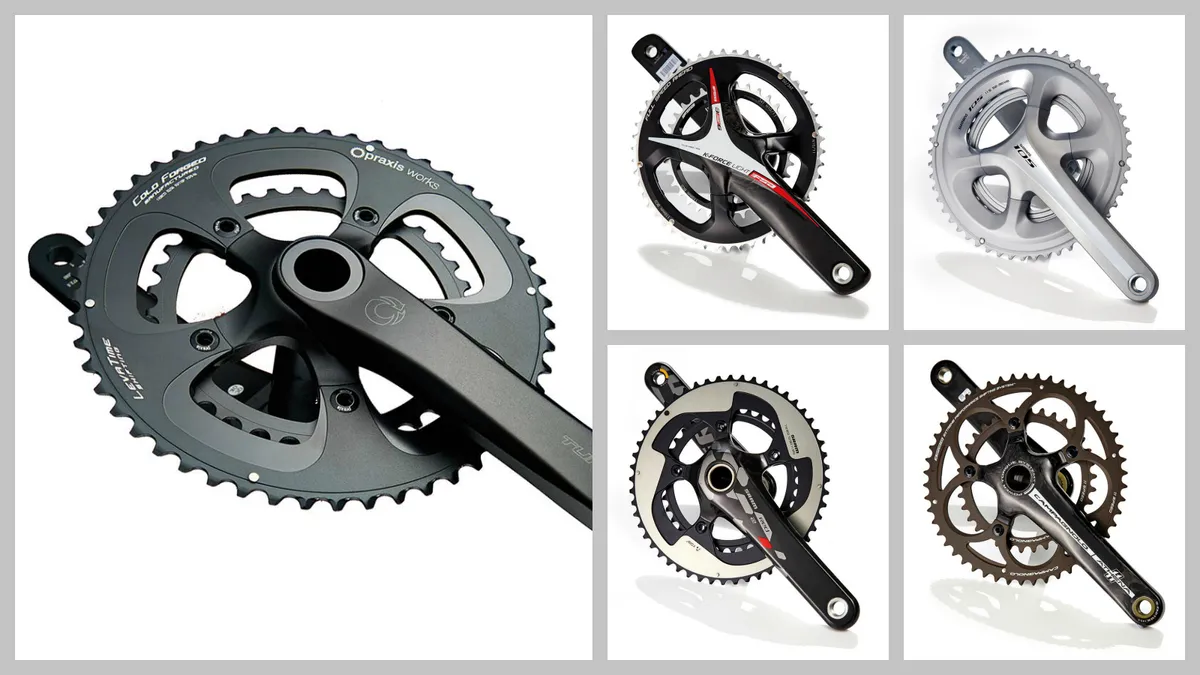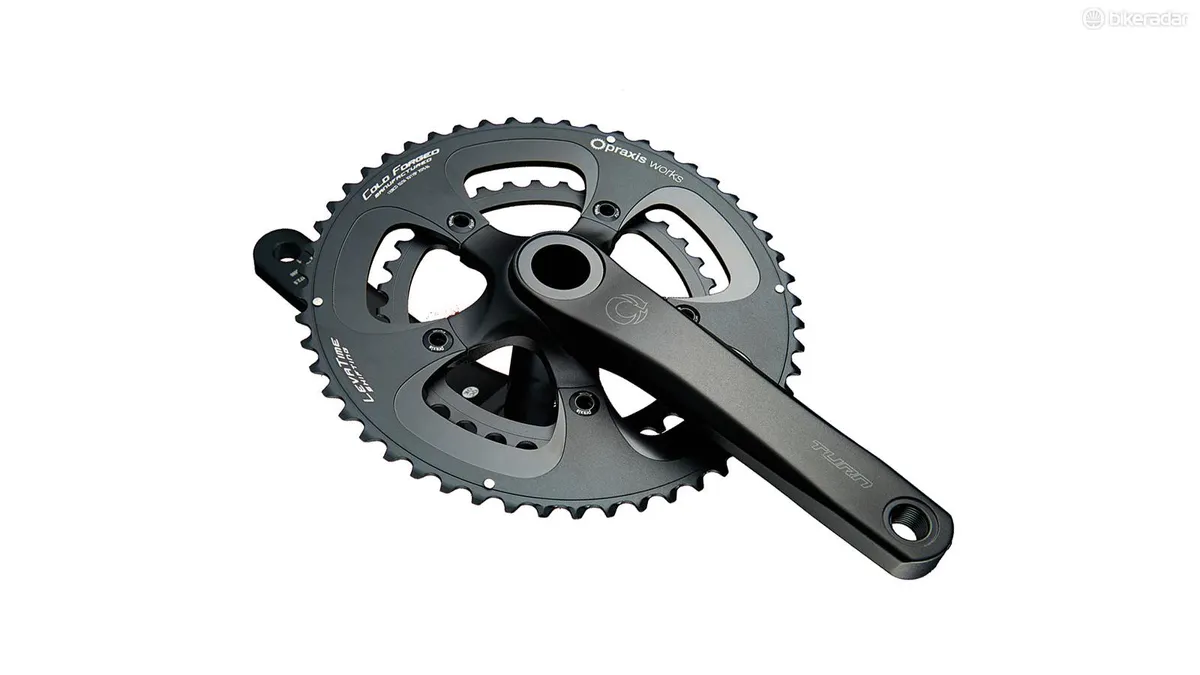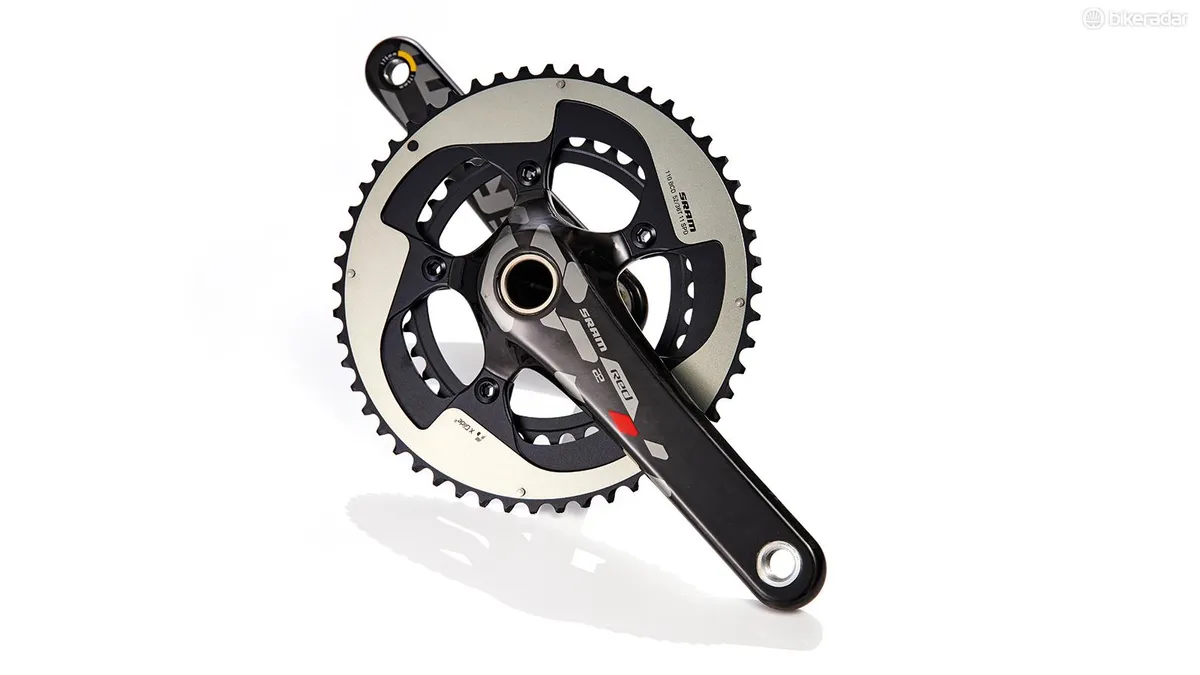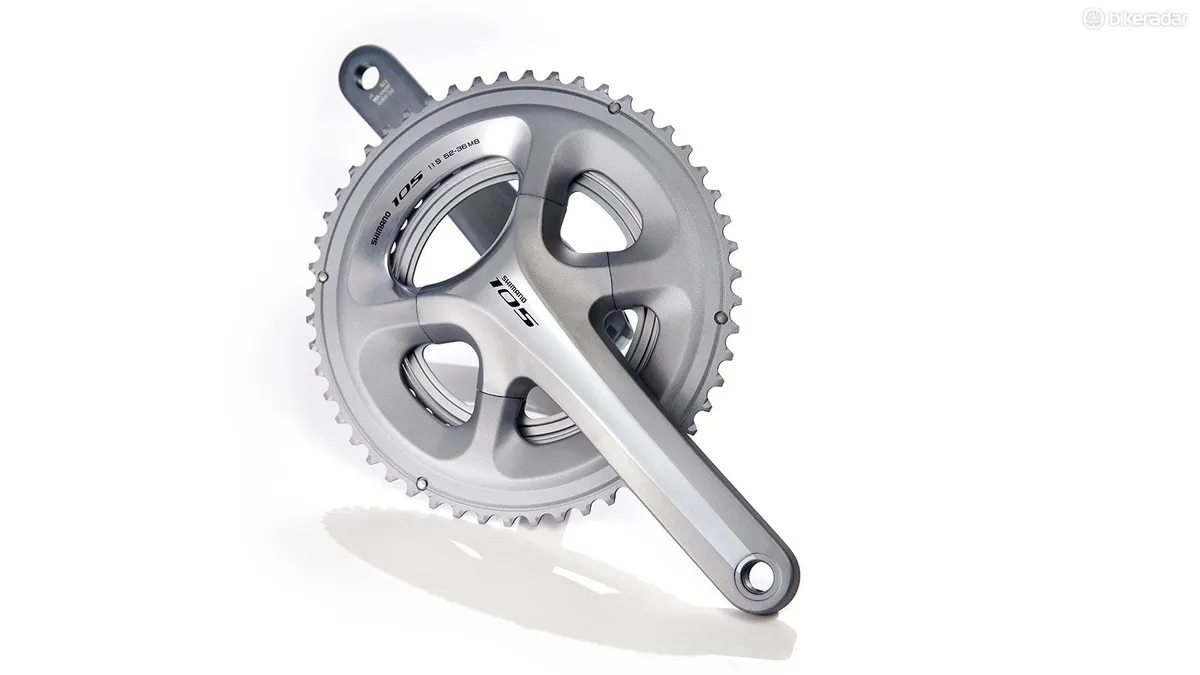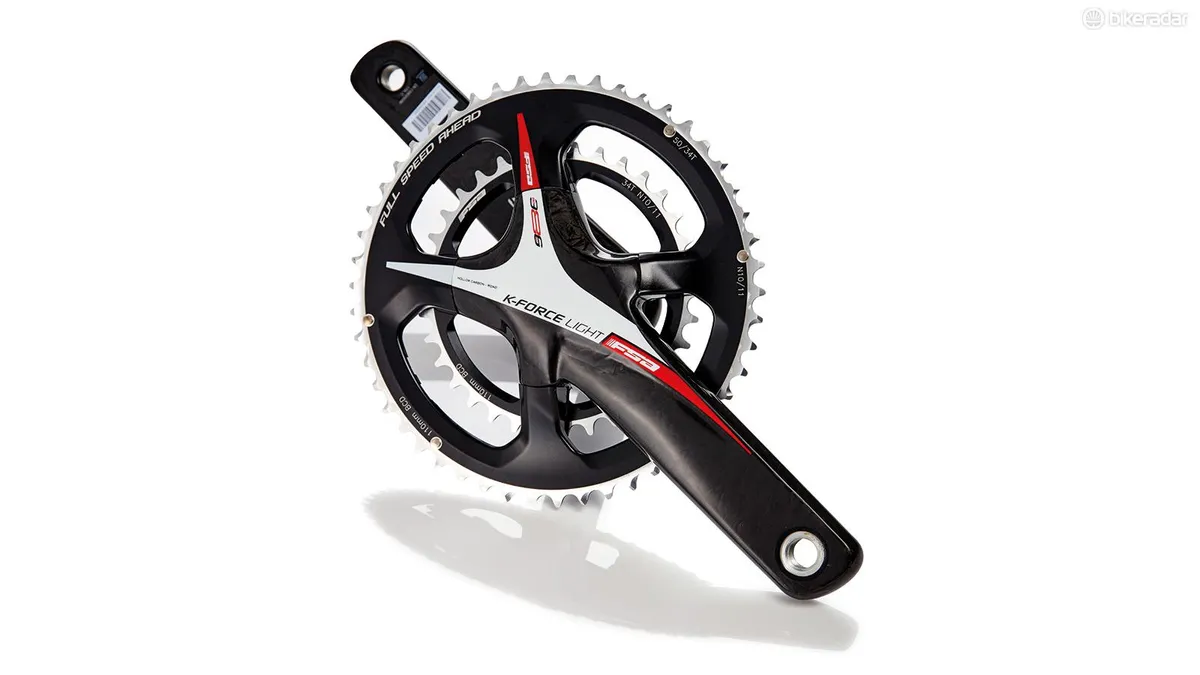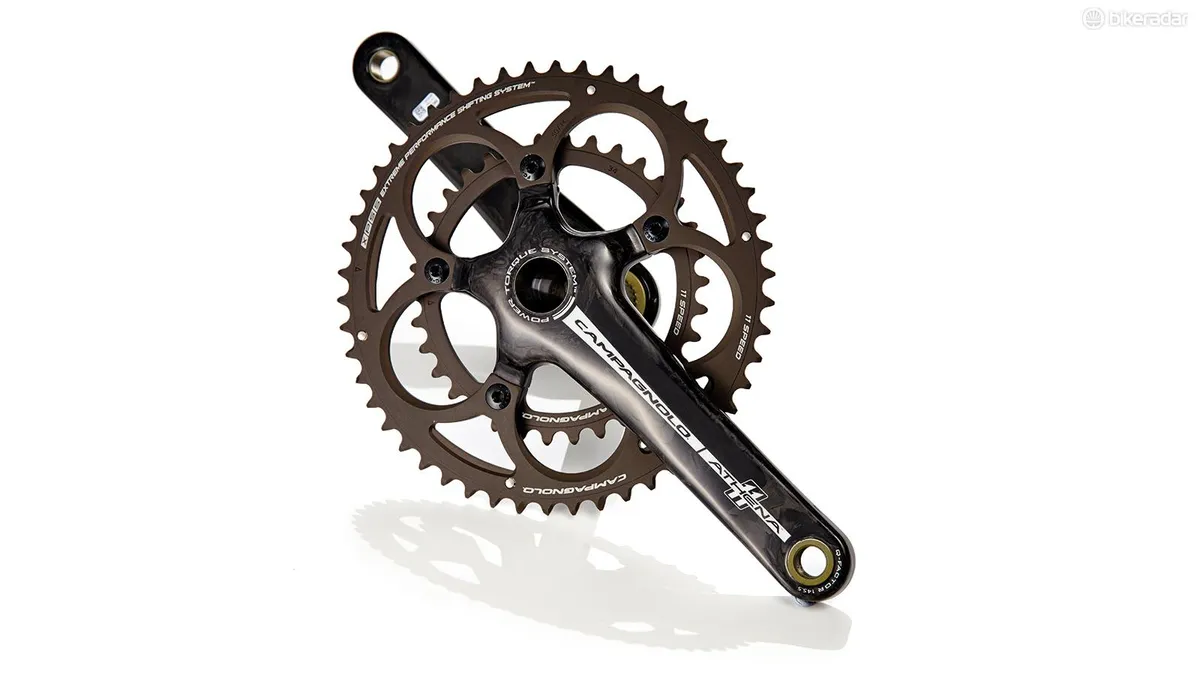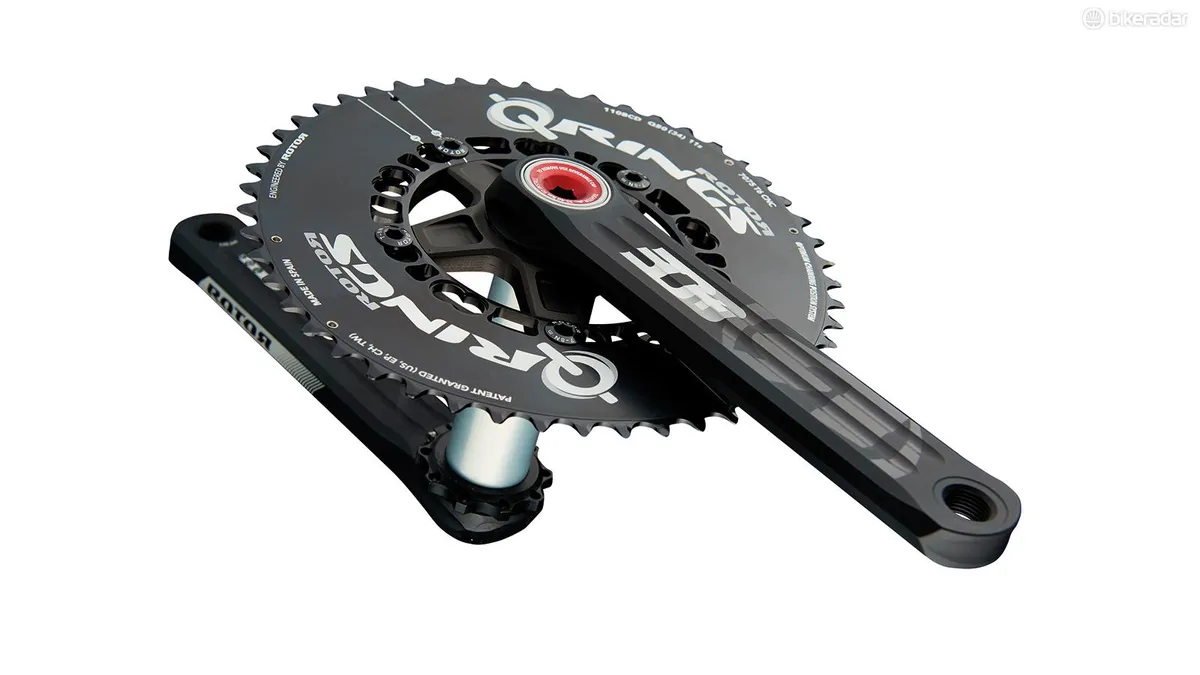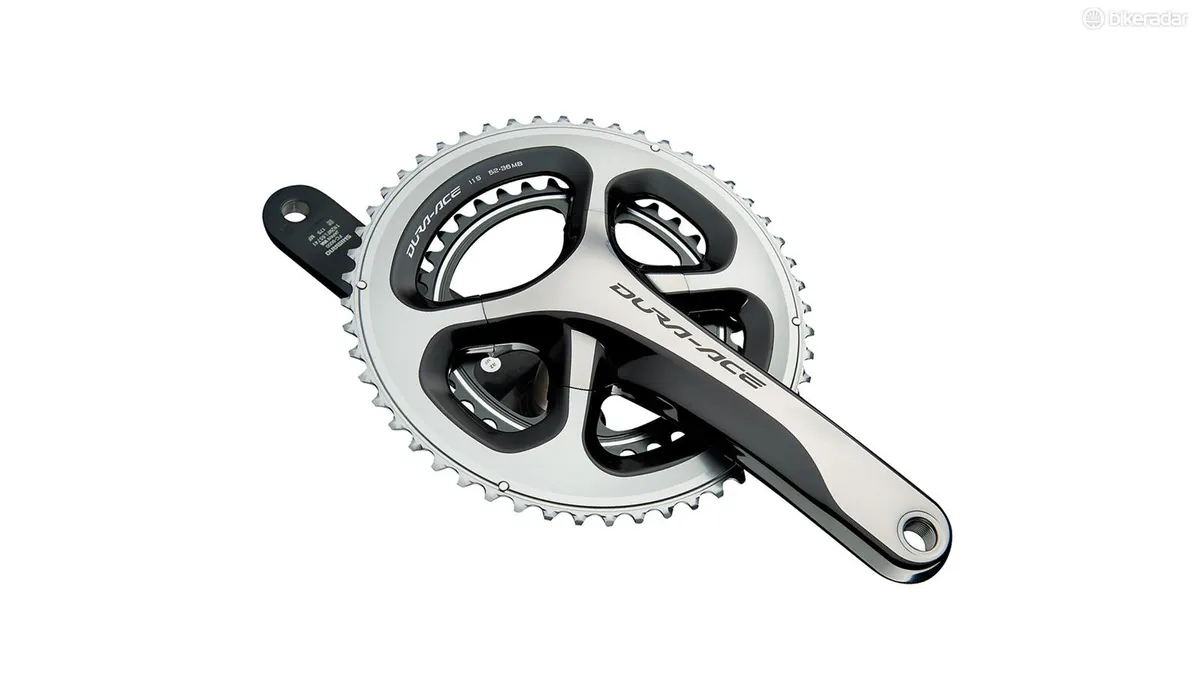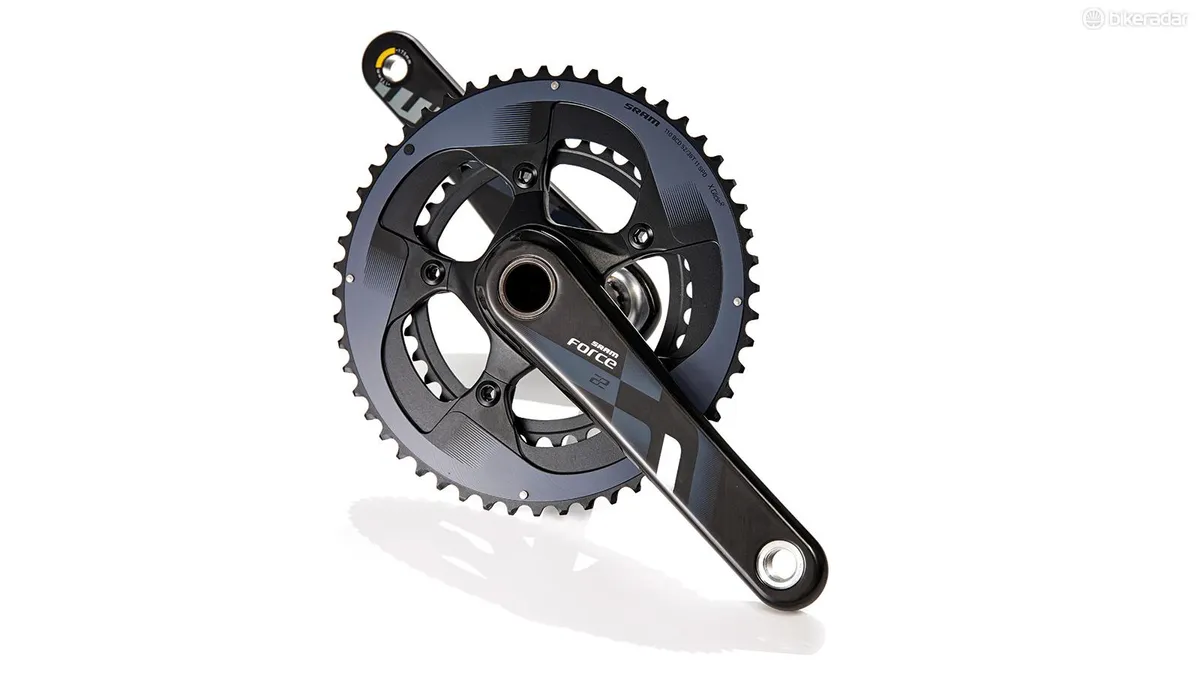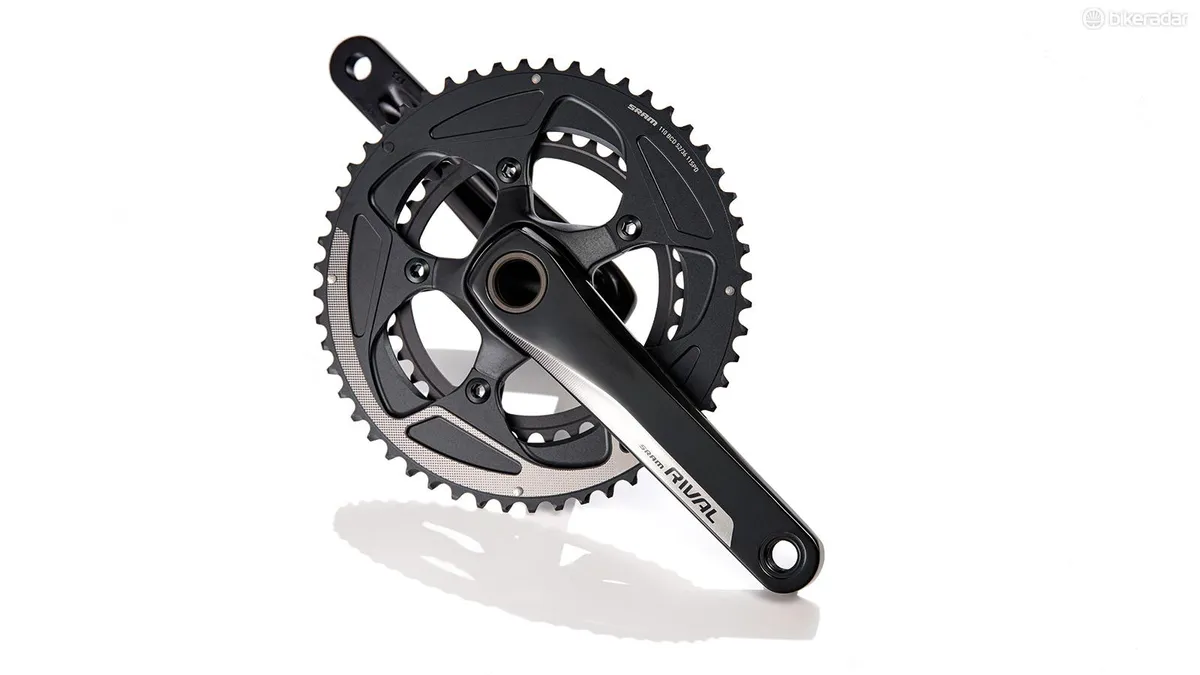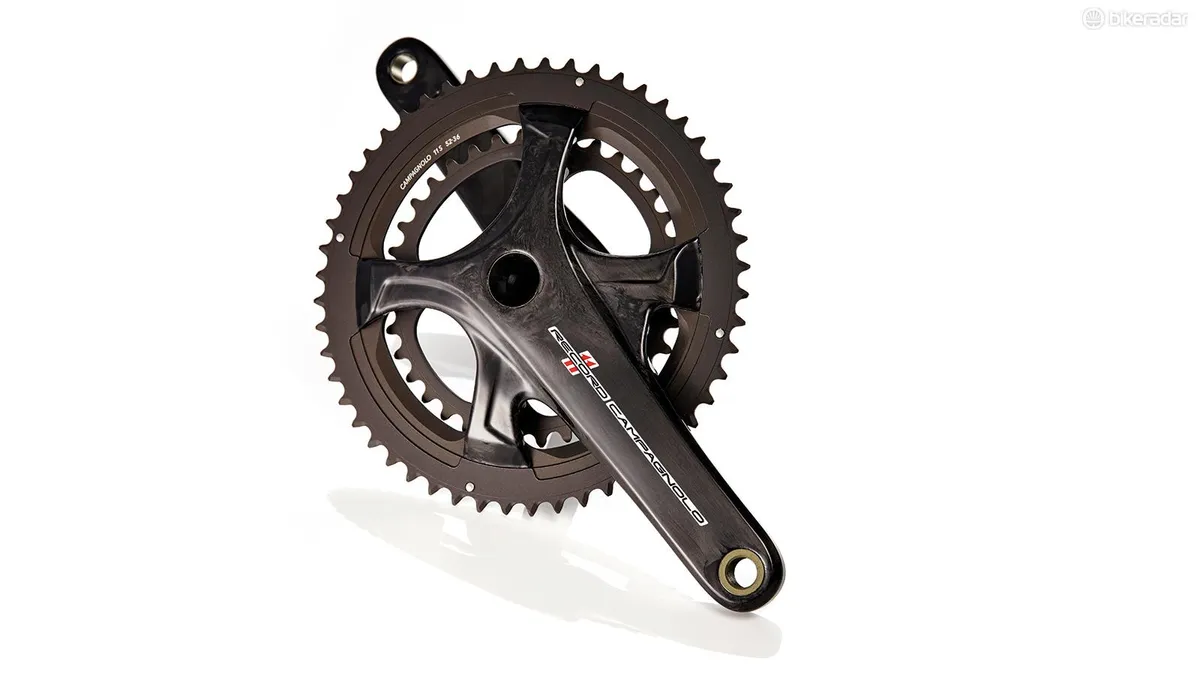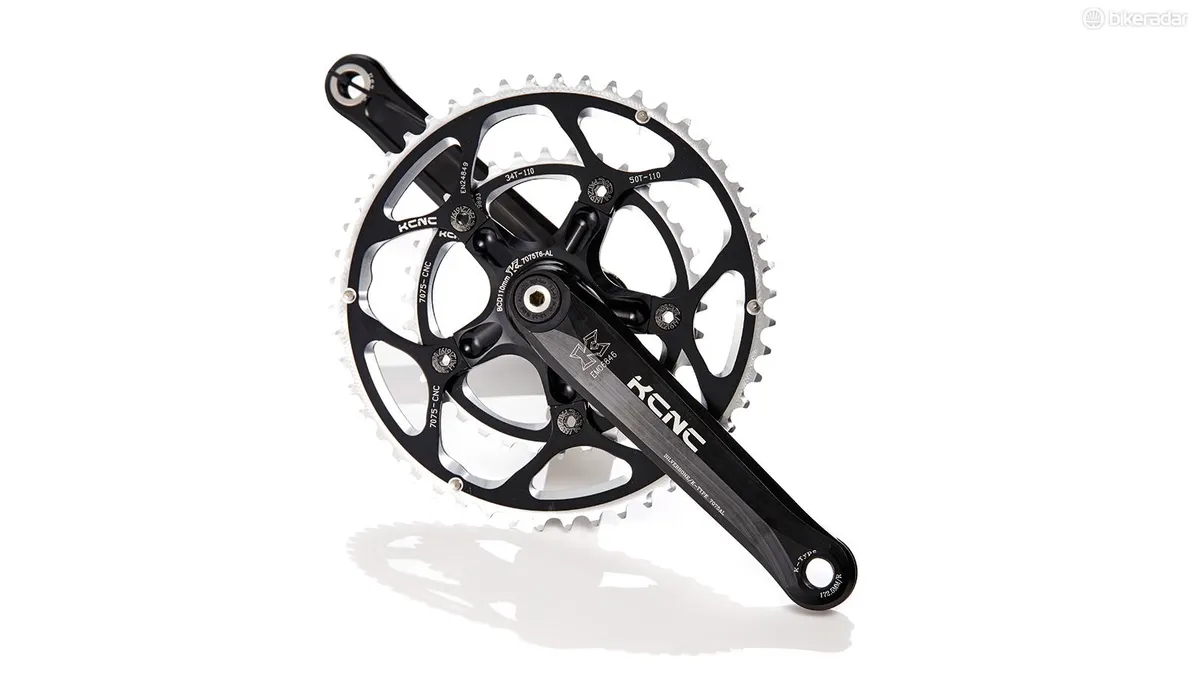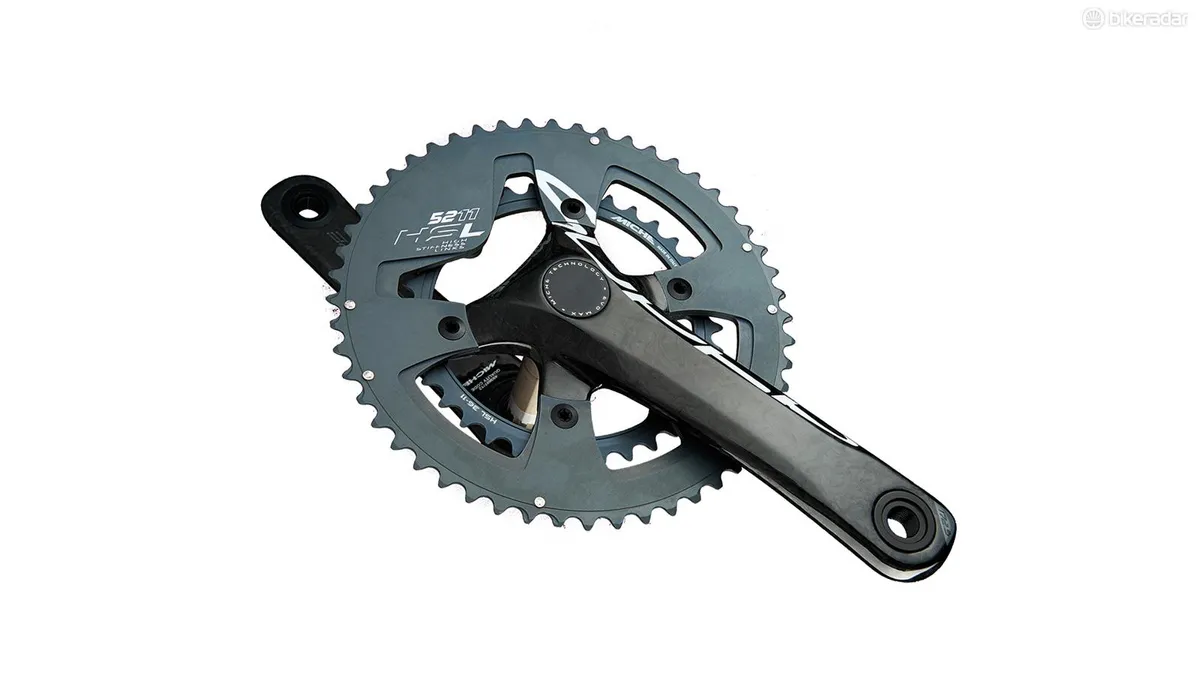Cranks are the crucial levers that turn pedal pressure into propulsion and upgrading this transmission keystone is always a cosmetic and performance temptation. But what do you need to know to arm yourself with the right crankset – cranks, axle, spider and chainrings – for your bike and riding?
Before you even start thinking about budget or clever design, you need to check which ones will fit your bike. Even though we tried to limit the axle types on test as much as possible, the sheer number of bikes we had to rope into our testing regime to find a home for all the different variants shows it’s no simple task. Even on same diameter axles, different details mean that different brands often need their own specific bearings to work. Adaptors and converters have made things easier recently but different bearing sizes and fitting standards are still a potential minefield so it’s still essential that you double check your chosen crankset will fit your frame before you part with any cash.
Related: Comparative crankset stiffness data released by Fairwheel Bikes
Don’t assume that bigger axled cranks are stiffer, either. Overall stiffness is governed by the entire structure, from the chainrings, through the spider and crank then across the axle to the offside crank. While they look fancy, don’t assume that carbon cranks are automatically stiffer than alloy ones either, as both materials use a range of manufacturing methods for a wide spread of results.
Don’t get hung up on weight either – cranksets sit in the most central, lowest point of your bike possible. This makes their weight the least obvious of any component in dynamic or handling terms, and it’s why most pro bikes use torque meters or even extra heavy axles to bulk their weight up to the minimum legal lever. Conversely, a lightweight crank that flexes so much it feels like your feet are bending under your bike is really demoralising when you’re trying to claw your way up a climb.
Key crankset components
- Crank length: Cranks – the ‘arms’ – come in different lengths to match different length legs and leverage preferences. The average is 172.5mm but 170 and 175mm cranks are relatively common on complete smaller and larger bikes respectively, and you can get as short as 160mm or as long as 180mm.
- Axle: Most cranksets use an axle permanently fixed to the driveside crank and a left crank that bolts/clamps into place. Some brands still use a separate axle, while Campagnolo uses two half axles that join in the centre on its Ultra Torque designs. Most come with 24mm steel axles or 30mm alloy ones.
- Spider: The four or five-arm piece that connects chainrings to axle. Some are moulded into the arms, some made separately but permanently attached, others are removable. Standard (53/39) chainrings generally have a 130mm bolt circle diameter (BCD – the fitting pattern for the rings), compact (50/34) 110mm.
- Chainrings: Most chainrings are made from a single-piece reinforced disc with teeth cut into the edge. In many cases brands are interchangeable or replaceable with aftermarket options. Shimano’s ‘blended’ chainring/spider design demands specific replacements to keep aesthetic and functional form.
- Material: Solid forged alloy cranks are the cheapest option but generally the heaviest. Drilled or hollow moulded alloy cranks then follow in the fashion (but not necessarily function) hierarchy. Carbon wraps on alloy armatures look good but don’t always perform well and even ‘full’ carbon cranks have to use alloy pedal and axle interfaces.
- Bearings: As well as different axle diameters, different bearing shoulder dimensions mean most cranks will only run in bearings from the same brand or specific aftermarket options, though converters are reducing the number of ‘impossible’ combinations. None of our test cranks obviously lost spin smoothness during our test period.
Best road cranksets
Turn Zayante – editor's choice (1)
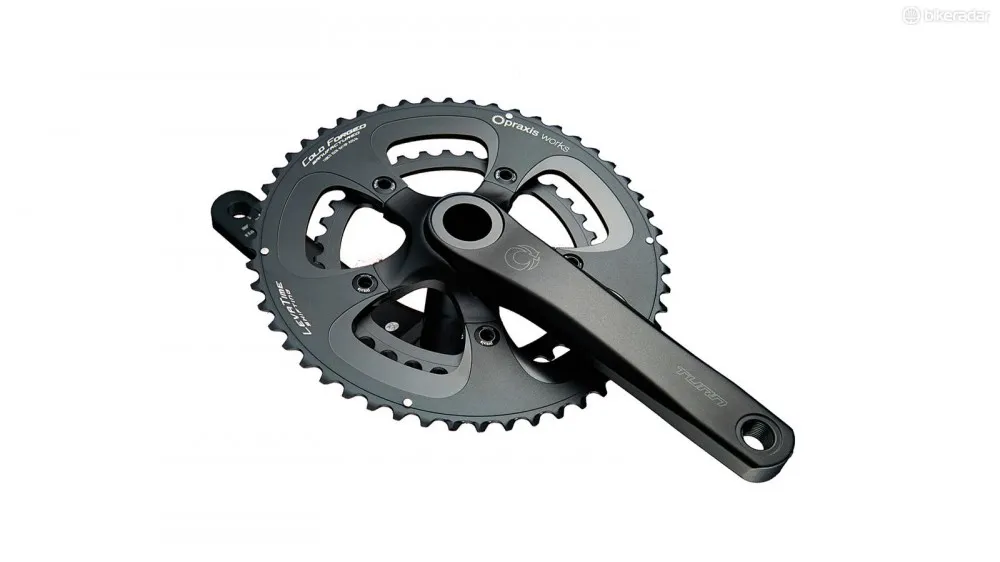
The Turn Zayante translates Praxis’s excellent reputation into an outstanding crankset
- Price: £240 / US$299 / AU$398
- Weight: 742g
- Crank length: 172.5mm
- Chainrings: 52/36
- Axle 30mm: alloy
Praxis Works has developed an excellent reputation for its converter bottom brackets and durable, slick-shifting cold forged rings. These cranks ‘Turn’ them into a complete package. While the hollow forged arms are relatively heavy they combine with the fixed 30mm axle to feel impressively stiff however hard you’re muscling them round, and converter BBs mean they fit threaded or BB86/BB92 bottom brackets which are normally limited to 24mm axles. Shifting is excellent and bearing and chainring longevity are already the benchmark even in grim weather – though they're not the lightest. Both BCD sizes are available, giving 46/36, 50/34, 52/36 or 53/39 options.
Shimano Ultegra – editor's choice (2)
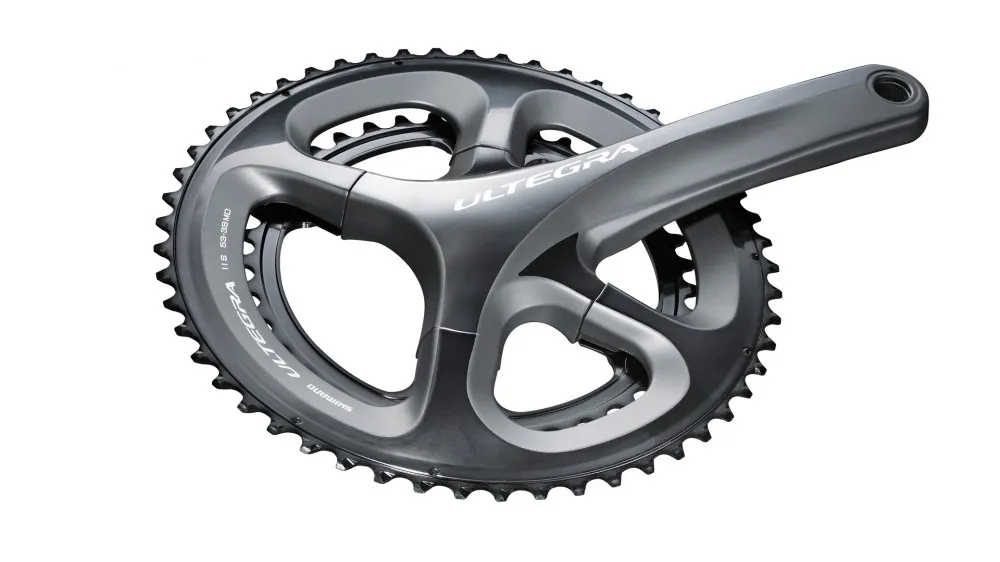
Ultegra delivers incredible shifting, solid stiffness and great overall value – though spares will cost you
- Price: £200 / AU$370 (Approx)
- Weight: 699g (53/39)
- Crank length: 172.5mm
- Chainrings: 52/36
- Axle: 24mm steel
With a shape that’s trickled down from Shimano’s range-topping Dura-Ace crankset, the Ultegra model hits the sweet spot between price and weight while also being stiffer than it’s pro-level big brother. Forgoing the annoyance of different crankset formats for full or compact set-ups, Shimano’s four-bolt chainsets use a 110mm BCD to allow either 50/34, 52/36 or 53/39 chainring pairings. The downside is that the cost of replacement rings is high. Despite the lack of a BB30 version and Shimano’s dogged use of a 24mm axle, the Ultegra crankset feels exceptionally solid under power while the profiling of the custom rings means shifting is as good as it gets.
SRAM Red 22 – most wanted crankset
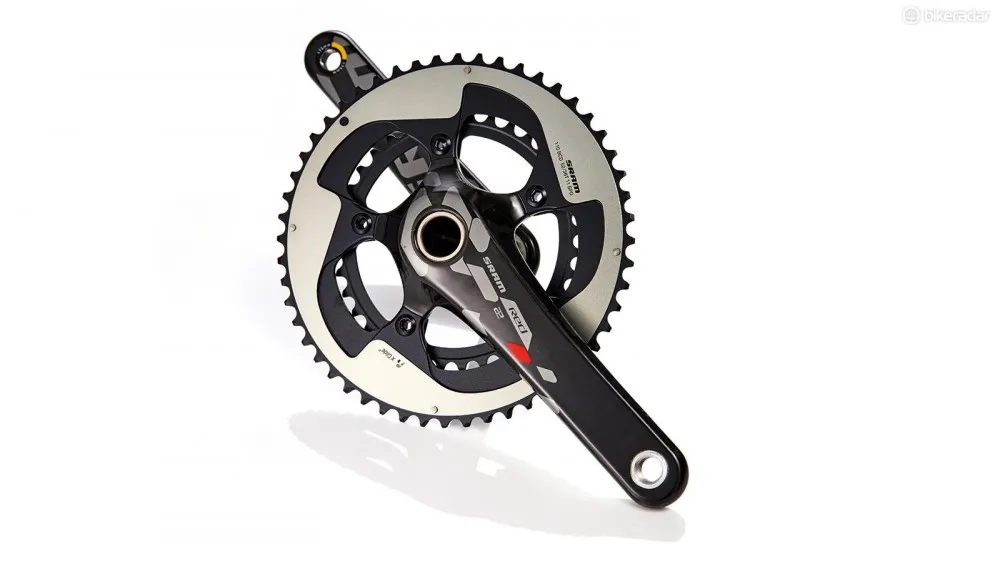
SRAM's Red 22 crankset offers the best combination of performance and versatility at the higher end of the market
- Price: £331 / AU$660
- Weight: 594g
- Crank length: 175mm
- Chainrings: 52/36
- Axle: 24mm steel
SRAM’s flagship crankset is a combination of high stiffness, low weight and multiple fit options. The broad carbon cranks and spider are moulded together, with the crank forming the fifth connection point for the deeply webbed X Glide R chainrings. This creates an impressively stiff feel even in the skinny axle version we tested, but it’s also available with a stiffer 30mm alloy axle and a full range of ring options. Shifting is marginally less slick than Shimano Dura-Ace but it’s still better than most, and the replacement rings and complete crankset are cheaper and lighter too.
Shimano 105 – best value crankset
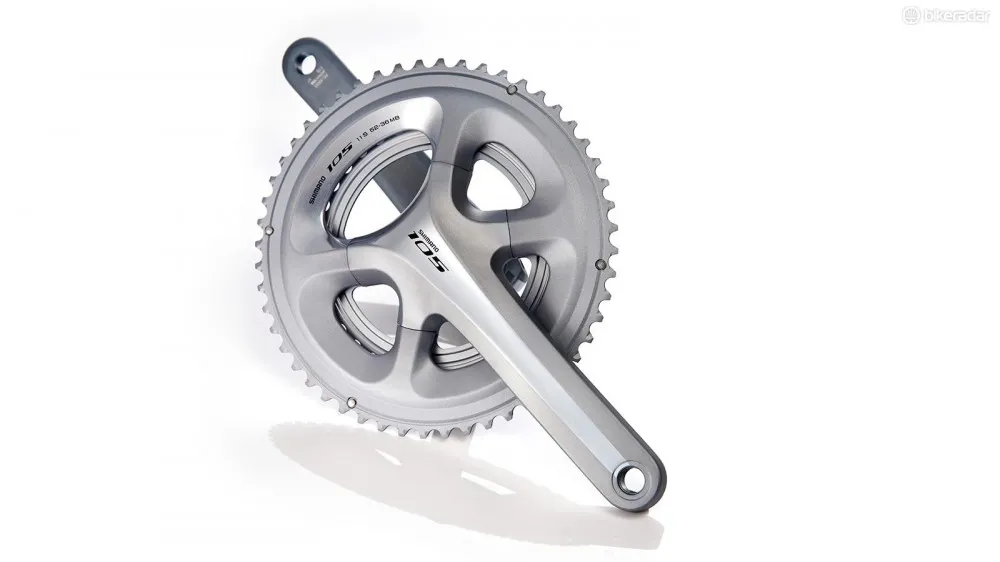
Shimano 105 is a supremely trusty groupset, and the top-value cranks fit in perfectly
- Price: £120 / AU$235 (Approx)
- Weight: 759g
- Crank length: 175mm
- Chainrings: 52/36
- Axle: 24mm steel
If there’s a version to suit you, 105 delivers all Shimano’s latest innovations at a bargain price. The four-arm spider and seamlessly synching 3D formed rings are asymmetric to support the rings in their highest load phase. A composite web bonded onto the back of the big ring creates an impressively solid feeling crank. Weight is reasonable, shifting quality excellent and installation in Shimano’s long running bearings is easy. Only expensive Shimano rings will fit, though, and complete cranksets are currently 50/34 or 52/36 with no triple ring or BB30 axle option.
FSA K-Force Light
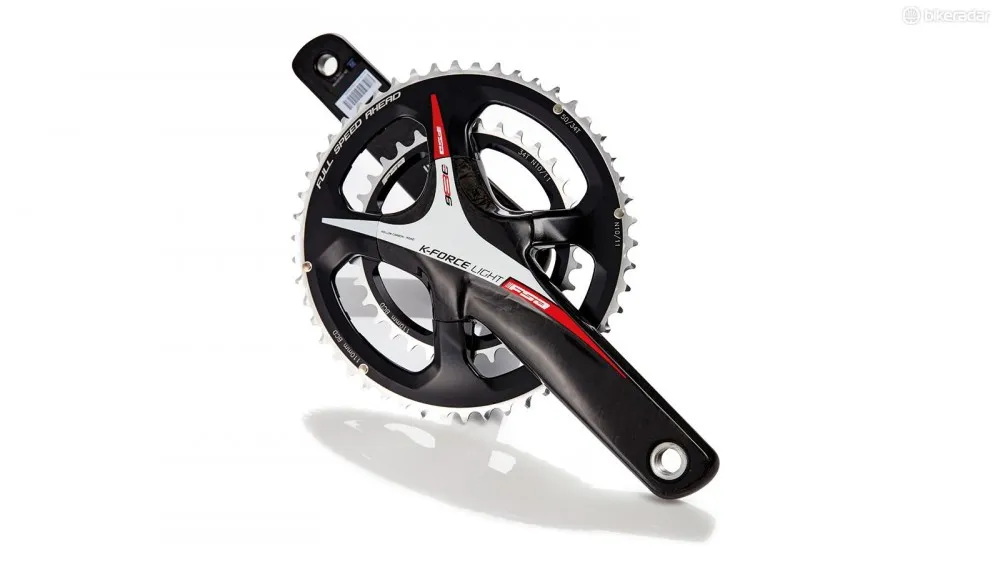
FSA's K-Force Light is not for the faint of wallet but delivers impressive stiffness relative to its weight
- Price: £640 / AU$850
- Weight: 567g
- Crank length: 175mm
- Chainrings: 50/34
- Axle: 30mm alloy
FSA’s top model is eye-wateringly expensive but very light and impressively stiff. The fat carbon cranks use a hollow construction and the deep arms of the spider sync with Shimano style 3D machined chainring arms. Add the 30mm spindle and the result is an impressive stiffness to weight ratio. Using adaptors, the 386EVO axle/BB design gives a universal frame fit, reliability on several 386 setups we’ve used has been good – and there's a tasty stealth grey version available. We found shifting could be occasionally be hesitant though.
Shimano Dura-Ace
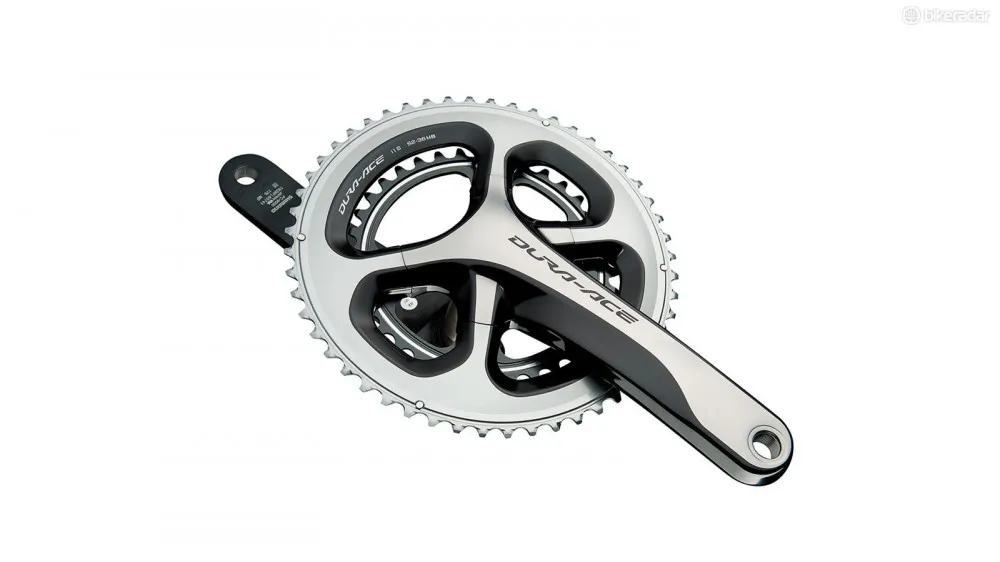
Shimano's Dura-Ace crankset offers stunning shifting but is skinny axle-only, and spares are costly
- • Price: £375 / AU$720 (Approx)
- • Weight: 636g
- • Crank length: 175mm
- • Chainrings: 52/36
- • Axle: 24mm steel
Shimano’s flagship crankset is a striking and sweet-shifting unit. The 3D chainring arms synching into the spider, introduced with last generation 7900 series Dura-Ace, has been refined with an asymmetric 110mm BCD spider design using four broader arms. The outer chainring uses an alloy backing plate to create an extremely stiff hollow structure and Shimano’s ramp and pin arrangement delivers the best front shifts in the business. The polished face arms are cosmetically very durable. Replacement rings are tear-inducingly expensive, though the number of aftermarket options are increasing. While the cranks are stiff under high pressure pedalling, the 24mm axle means overall stiffness is adequate rather than amazing. Drive often dilutes further if you have to use an adaptor in an oversized BB shell to compensate for the fact that Shimano still doesn’t make a BB30 version.
Verdict: Stunning shifting but skinny axle only and spares are costly
Campagnolo Athena Carbon
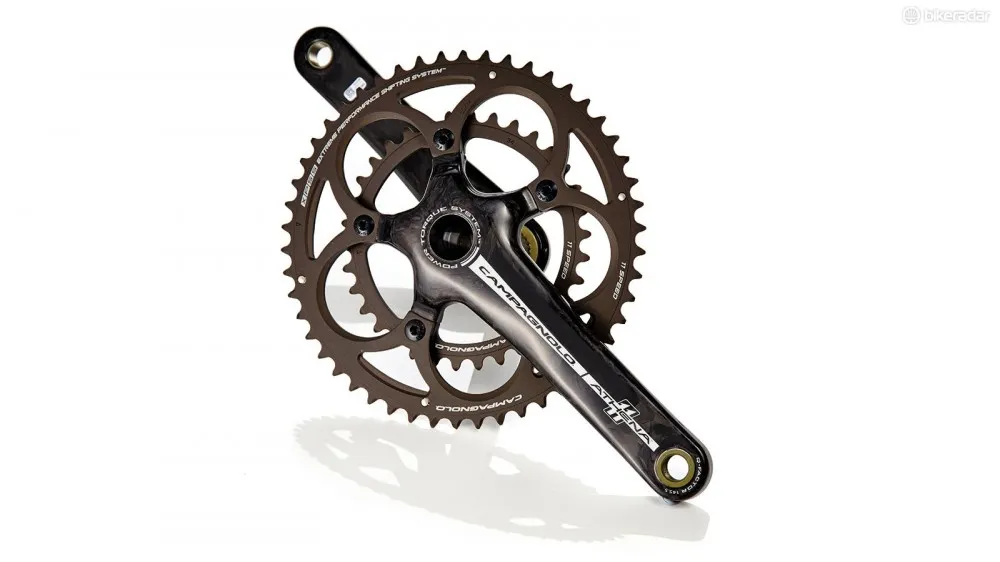
Campagnolo's Athena Carbon cranks are a quality lightweight option, though flex can be an issue
- Price: £286 / AU$550
- Weight: 650g
- Crank length: 172.5mm
- Chainrings: 50/34
- Axle: 24mm steel
The Athena’s one-piece slim carbon cranks and spider make this a light unit at any cost. The fifth ‘arm’ of the spider is actually a direct fit onto the crank to add extra support to the relatively spindly rings. Heavy or powerful riders will notice definite deflection and a drive-diluting rubber chain sensation when they’re at full throttle. Chainring longevity is good, though, and the axle-mounted driveside bearing guarantees Campagnolo’s reputation for season after season of smoothness. You’ll need Campag tools for installation/removal, though.
Rotor 3D+
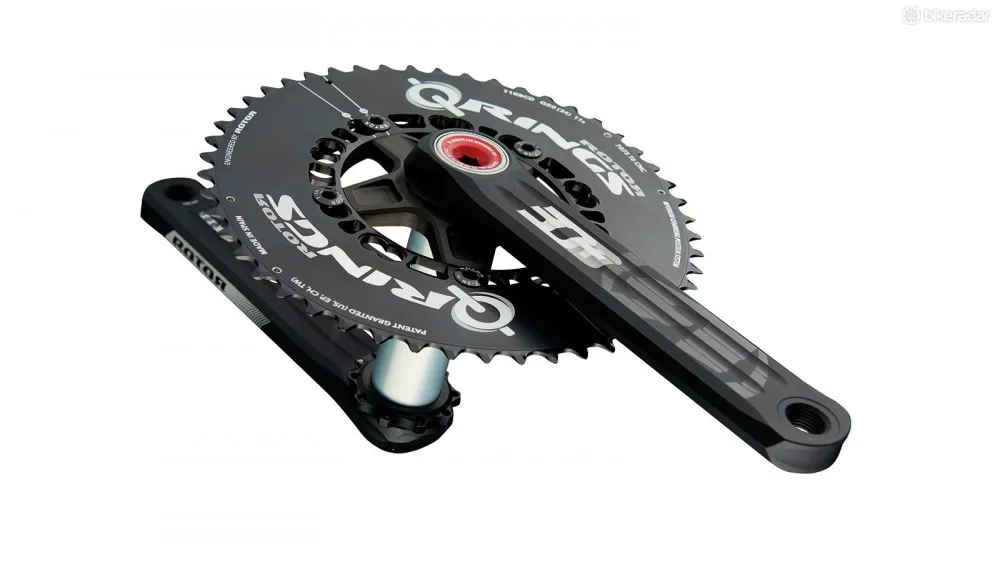
The Rotor 3D+ is a distinctively solid, universal fit crank with optional asymmetric rings
- Price: £514 / AU$660 (add AU$222 for chainrings)
- Weight: 651g
- Crank length: 175mm
- Chainrings: 50/34
- Axle: 30mm alloy
This has been around for a while but it’s still a distinctively stiff and wide fitting option. The ribbed alloy cranks with triple internal drilled channels look old school but feel rock solid. That feeling is bolstered by the 30mm axle and Rotor has developed an external bottom bracket design that makes the crankset compatible with threaded frames and completes its universal compatibility. We’ve had some short lifespans from press-fit Rotor bearings, so regular TLC is wise in filthy conditions. But the heavily machined chainrings are stiff and durable, weight is good and splined fit is secure if tightened aggressively from new. The 110mm five-arm spider gives a wide range of ring options including Rotor’s own asymmetric Q-Rings if you fancy experimenting.
SRAM Force 22
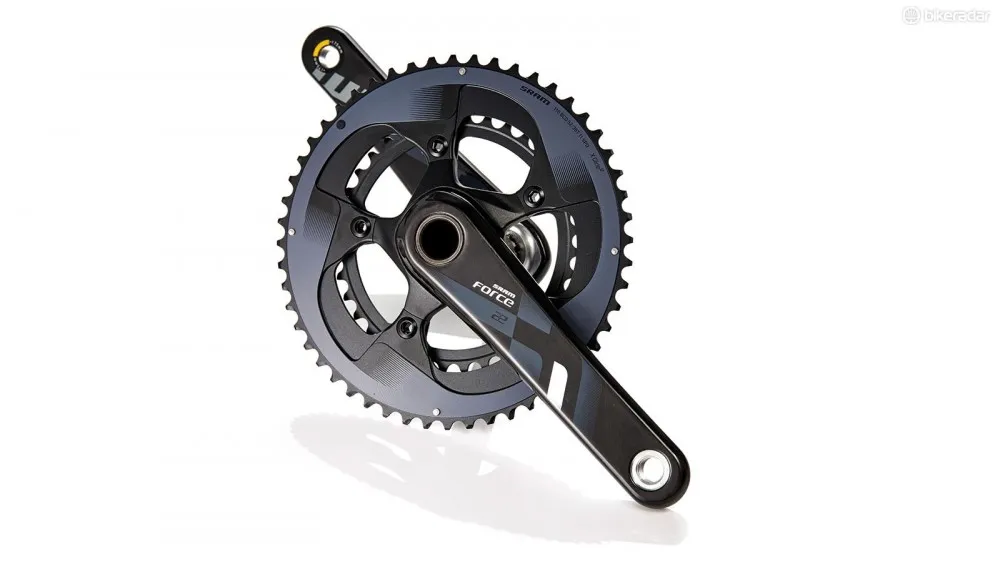
SRAM's Force 22 cranks look great and shift well; they're not the stiffest out there though
- Price: £232 / AU$440
- Weight: 709g
- Crank length: 175mm
- Chainrings: 52/36
- Axle: 24mm steel
With its broad gloss carbon arms, forged removable spider and laser-etched X Glide R chainrings, SRAM’s Force is a very good looking crankset. Shifting performance is clean and prompt, it’s lighter than similar priced alloy competitors and the BB30 version is a few grams lighter still. Both 110mm and 130mm BCD five-armed spiders mean 53/39, 50/34, 52/36 and 46/36 cyclo-cross options, and it can be switched for a CX1 single ring spider. Stiffness is okay if not outstanding under full gas power, confirmed by independent testing we’ve seen.
SRAM Rival 22
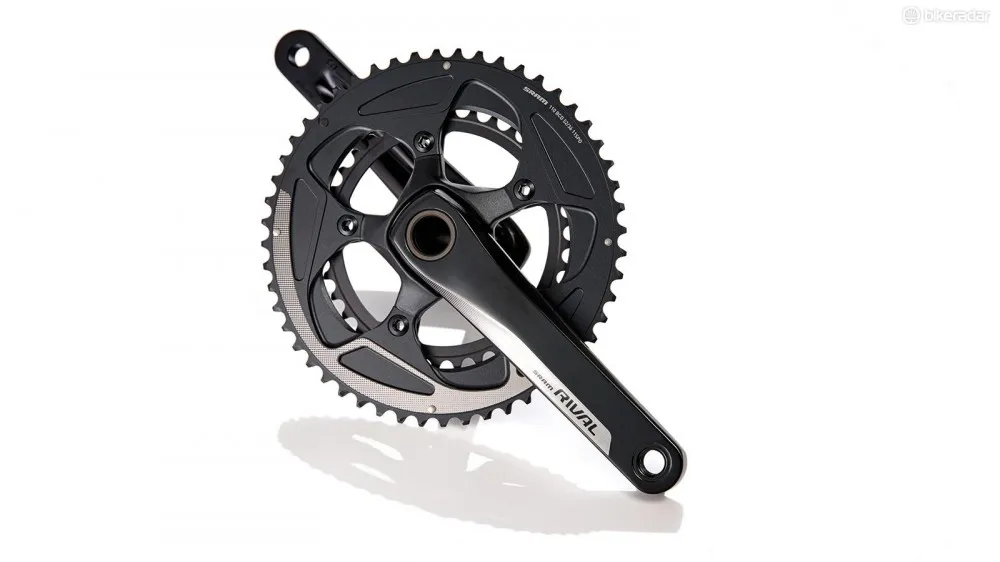
SRAM's Rival 22 is a solid though weighty mid-price option
- Price: £145 / AU$260
- Weight: 883g
- Crank length: 175mm
- Chainrings: 52/36
- Axle: 24mm steel
SRAM’s mid price crankset works okay but is weighty. Rival uses similar deep machine sculpted X Glide R chainrings as Force for easy shifting function, and the similar scooped-back, removable spider means stiffness is decent, with reasonable if not dramatically rigid power transfer. The 110mm BCD spider is available in 50/34, 52/36 and 46/36 cyclo-cross formats and can even be switched for a CX1 single ring spider. The solid forged, hollow backed cranks are significantly heavier than its obvious competitor, Shimano 105, and the BB30 version is even weightier.
Also tested
Campagnolo Record UT
- Price: £470 / AU$880
- Weight: 678g
- Crank length: 175mm
- Chainrings: 52/36
- Axle: 25mm steel
KCNC RD K-Type
- Price: £300 / AU$ N/A
- Weight: 632g
- Crank length: 172.5mm
- Chainrings: 50/34
- Axle: 24mm steel
Miche Supertype Carbon HSL
- Price: £500 / AU$ N/A
- Weight: 697g
- Crank length: 172.5mm
- Chainrings: 52/36
- Axle: 24mm steel
Final verdict
It’s easy to build up preconceptions when testing cranksets as part of a complete bike, but testing them head to head in isolation has thrown up some interesting results. There’s certainly a big drop off in genuine gain for increased spend once you get into the top echelons of the market. This makes the light, tight but still relatively affordable SRAM Red 22 crankset our real world race winner. The solid, slick-shifting Shimano 105 also shames a lot of cranksets double or even quadruple the price, to crank out a decisive victory for value.
Our overall winner is a crankset many won’t even have heard of. Turn’s Zayante takes the proven performance of Praxis’s existing components and adds dramatically stiff hollow-armed torque transfer. The result is an extremely tough, durable, all-weather, all-purpose crankset that proves a relentless work ethic is way more important in real world riding than a few grams saved in the last place on your bike you’ll notice them.
